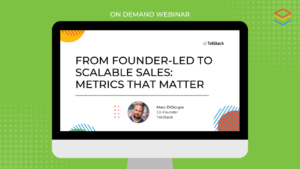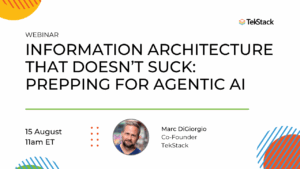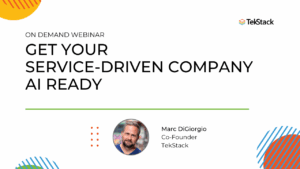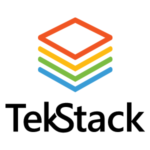
Agentic AI is reshaping how we interact with business software. Learn how autonomous and conversational agents are driving productivity and transforming workflows in 2025.
From Forms to Agents: The Shift Toward Agentic AI
For the last 30 years, business applications have been largely a ‘forms on tables’ design. But that’s all about to change.
10 years ago, Slack made the chat user experience cool in the workplace. Five years ago, COVID made workplace chat a necessity. Two years ago, Generative AI introduced everyone to the idea of conversational prompts, seeding the adoption of agentic AI now in 2025. I would bet money that within two years, 80% of your interactions with business applications will be through agent-like experiences.
Conversational vs Autonomous Agents
There are two types of agents: Agents that just do stuff when stuff happens, not requiring any prompts from users. These are autonomous agents. “Hey, Bobby came back to the pricing page, I’ve just added him to a sequence and sent an email asking if he needs any help.” Then there are conversational agents that require a well-formed prompt.
I think the most effective agents will be autonomous agents. Almost everything in your business is triggered by some internal or external event, and it won’t depend on your users being very good at ‘prompt engineering.’
Autonomous Agents may not be AI
Some autonomous agents are just Boolean logic. But, Boolean ≠ AI. The example above is a Boolean, if/then, flow. Others will require pattern recognition or deep insight. An example of that could be, “I see that you have a discovery meeting coming up with a new prospect, I’ve gone out and researched everything I know about this company and prepared this call plan document.” It’s still an agent that is triggered by an upcoming appointment in your calendar, but it consumes a bunch of information from various sources of knowledge to produce a result. An agent like this could also action next steps or update existing systems.
How should we think of Agents?
Consider agents as enablement tools, not replacement tools for humans. Upwards 70% of a seller’s time is spent on non-sales related activities. Same with your services team, the average utilization of a consultant hovers at around 60%, meaning 40% of their time is spent on non-value-added tasks.
Agents should enable your employees to spend even more time with prospects and customers. They should be triggered by an event, help users with common prompts, build corporate memory over time, be able to access structured data in databases as well as unstructured information in emails, documents, and conversations. In short: beyond just spitting out a bunch of text, agents should also action events.
Get ready for Agent proliferation
10 years ago, we saw the beginning of app proliferation in the workplace, fueled by the democratization of the cloud where it became easy for departments to buy technology without asking for IT permission.
In 2025, all your existing vendors will have (if they don’t already) some form of “Agent” or “AI” functionality. Plus, you might be considering new vendors to work alongside legacy vendors.
Software vendors will race for relevance; the result will be an Agent Proliferation that is greater than the App Proliferation we saw since the Cloud.
Buyer Beware
Make sure you watch out for:
- Vaporware. We are already seeing countless new agents, from both new and existing vendors, that are little more than science experiments. Early attempts with limited results may burn the only cycles available in these early hype cycles. These ‘AI Wrapper’ apps might be little more than configured MCP clients that your organization could build on its own.
- Data Sovereignty. Vendors like Salesforce have started to lock down third party access to data. This brings about the question, who owns your data? Is it the software vendor or your organization? LLMs need access to your data in order for agents to function…but what happens if they can’t?
- Information Architecture. In organizations, crucial information frequently ends up tucked away in emails or scattered across informal channels. Many still rely on mapped drives, with often non-existent security models and access control. Such companies may have put off the effort to improve their information architecture, but with AI, you need these agents have access to and be able to consume accurate information.
- Usage Costs. AI processing is expensive. This will get reflected in your monthly usage bills which might be unpredictable and dependent on adoption.
- Agent proliferation. You’ll see agents popping up everywhere. Soon, there will be agents calling other agents, or different agents calling the same data source through MCP or API calls.
What is TekStack’s approach to Agentic AI?
Single System of Record
TekStack is a single source system of record. Everything from marketing, outbound, sales, professional services, support, and billing resides in one system, one database. This makes it much easier for our agents to be triggered by an event, or take on actions. There is no need to marry multiple MCPs, or use APIs to integrate data.
We are industry specific
As a vertical app, we have over 80 best practices built into the platform, which makes it infinitely easier to predict the needs of our customers, or recommend best practices.
Built in Information Architecture
Our main orientation is around the ‘Account’ record, we can relate all transactional information – subscriptions, invoices, projects, cases – to the account. Because contacts are related to accounts, we can also relate unstructured information such as activity, email, web visits, meeting recaps, and documents. Everything is wrapped in security groups so that the agents don’t accidentally consume data it shouldn’t.
Work where you work
As a Microsoft based application, our MCP Client is Copilot Studio or Teams. We work where our users already work. Companies using Microsoft 365 are already using Teams and many are familiar with Copilot Studio. TekStack is baked right in there with no need for a different MCP Client or user experience.
Your Data is Yours
While many vendors like Salesforce are locking down their data, Microsoft has taken a completely opposite approach. Dataverse, the underlying platform that TekStack is built on, is cloud technology that already sits in your tenant. Customers just provide TekStack with access to the environment – the complete opposite model of most SaaS apps. Microsoft encourages customers to use this data with their Copilot Studio and Azure AI Foundry technologies.
Welcome to the Age of Action
The way we work with software is being rewritten in real time. Agents that act, think, and help without being asked are the new normal. The question isn’t if your business will adopt them, it’s how fast. TekStack is built for this moment: one system, one source of truth, and agents that actually do the work. No duct tape. No data silos. Just results.
Frequently Asked Questions
What is agentic AI?
Agentic AI refers to intelligent software agents that can act autonomously or interact conversationally to complete tasks and make decisions.
How is agentic AI different from traditional AI?
Traditional AI often requires user input to function. Agentic AI can initiate actions and adapt to changing contexts without constant human direction.
What industries will benefit most from agentic AI?
Sales, marketing, customer service, and operations are among the top beneficiaries, especially in SaaS and enterprise software environments.








